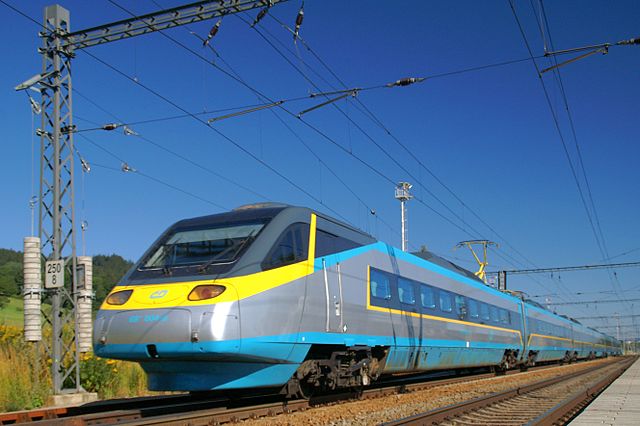Pendolino is an Italian family of high-speed tilting trains used in Italy, Spain, Germany, Poland, Portugal, Slovenia, Finland, the Czech Republic, Slovakia, the UK, the US, Switzerland, China, and Greece. It was also used in Russia from December 12, 2010 until March 26, 2022. Based on the design of the Italian ETR 401, it was further developed and manufactured by Fiat Ferroviaria, which was taken over by Alstom in 2000.
An ETR 600 high-speed train, operated by Trenitalia in 2023
The ETR 450 was the first production Pendolino train, in service from 1988 to 2015
ETR 485 at Roma Termini railway station
An ETR 460 of Trenitalia at Sapri
A tilting train is a train that has a mechanism enabling increased speed on regular rail tracks. As a train rounds a curve at speed, objects inside the train experience centrifugal force. This can cause packages to slide about or seated passengers to feel squashed by the outboard armrest, and standing passengers to lose their balance, or in such excessive speeds, could even cause the train to derail. Tilting trains are designed to counteract this by tilting the carriages towards the inside of the curve, thus compensating for the g-force. The train may be constructed such that inertial forces cause the tilting, or it may have a computer-controlled powered mechanism.
A Japanese KiHa 283 series tilting DMU, which can tilt up to 8° (6° in normal operation)
A ČD Class 680 Pendolino train in July 2006
A Swiss SBB RABDe 500 on the Hauenstein railway line in May 2007
An ICE T (DB class 411) leaves a curve, showing cars tilted to different degrees.








